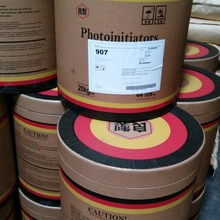James Webb telescope may have found a rocky exoplanet with an atmosphere
The hunt for an Earth-like planet shielded with a protective atmosphere has so far eluded scientists, but a new detection by the James Webb Space Telescope could be the first.
Astronomers are taking a closer look at GJ 486b, relatively close to our solar system at just 26 light-years away in the constellation Virgo. Discovered two years ago, it's a rocky exoplanet about 30 percent larger than Earth, orbiting a red dwarf star every 1.5 days.
Despite its being so close to its host star and having a scorching-hot temperature of about 800 degrees Fahrenheit, the planet shows signs of having water vapor — a hint that the alien world may have an atmosphere swaddling the planet.
"Water vapor in an atmosphere on a hot rocky planet would represent a major breakthrough for exoplanet science," said Kevin Stevenson, the principal investigator of the study from the Johns Hopkins University Applied Physics Laboratory, in a statement. "But we must be careful and make sure that the star is not the culprit."
SEE ALSO:Sorry Trekkies: Bad news about the 'real-life Planet Vulcan'Tweet may have been deleted
Why do we need an atmosphere?
NASA has playfully called Earth's atmosphere its "security blanket:" Without it, the type of life flourishing on the planet wouldn't exist. This cocoon holds oxygen in the air and filters out harmful ultraviolet radiation from the sun, all while keeping our world warm and habitable. Furthermore, it creates pressure that allows liquid water to exist on Earth's surface.
Water vapor has been discovered on gassy exoplanets before, but never for a rocky or terrestrial planet akin to Earth, Mars, Mercury, and Venus.
Perhaps surprisingly, though, another possible explanation for the vapor detected by Webb is that water is coming from the outer layer of the nearby red dwarf star — cooler than the sun — not from the planet at all. Scientists will need more observations to determine if the exoplanet indeed has an atmosphere and how much water is present.
 Webb researchers found hints of water vapor in their analysis of a rocky exoplanet. Credit: NASA / ESA / CSA / Joseph Olmsted (STScI)
Webb researchers found hints of water vapor in their analysis of a rocky exoplanet. Credit: NASA / ESA / CSA / Joseph Olmsted (STScI)Even the sun sometimes has water vapor in sunspots because these areas are much cooler compared to the surrounding surface of the star. Given that the recently found exoplanet's star is much cooler than the sun, Webb researchers say it's even more plausible water vapor would concentrate within its starspots. That means no one yet knows whether the star is mimicking the signal they'd see from a planet's atmosphere.
Want more scienceand tech news delivered straight to your inbox? Sign up for Mashable's Top Stories newslettertoday.
“Water vapor in an atmosphere on a hot rocky planet would represent a major breakthrough for exoplanet science."
The new Webb research will be published in The Astrophysical Journal Letters.
 GJ 486b is a rocky exoplanet about 30 percent larger than Earth, orbiting a red dwarf star every 1.5 days. Credit: NASA / ESA / G. Bacon (STScI)
GJ 486b is a rocky exoplanet about 30 percent larger than Earth, orbiting a red dwarf star every 1.5 days. Credit: NASA / ESA / G. Bacon (STScI)How does Webb study exoplanets?
Webb, a collaboration of NASA, the European Space Agency, and the Canadian Space Agency, is the most powerful infrared telescope in space. Astronomers say its scientific capabilities are igniting a golden age in our understanding of the universe. One of its key missions is to peer into the atmospheres of other worlds. Discoveries of water and methane, for example — important ingredients for life as we know it — could be signs of potential habitability or biological activity.
The Webb researchers used a technique called transmission spectroscopy to study the exoplanet. When these worlds cross in front of their host star, starlight is filtered through their atmospheres. Molecules within the atmosphere absorb certain light wavelengths, or colors, so by splitting the star’s light into its basic parts — a rainbow — astronomers can detect what light segments are missing to discern the molecular makeup of an atmosphere.
Related Stories
- How Webb just changed our concept of Uranus forever
- Webb telescope just started peering at the fascinating TRAPPIST planets
- Webb telescope spots unusual world with terrifying clouds
- Sorry Trekkies: Bad news about the 'real-life Planet Vulcan'
- Watch these distant planets orbit their star in spectacular time-lapse
After observing two instances of the planet crossing in front of its star, the researchers used three different methods to analyze the data. All were consistent in showing a strong likelihood for a water vapor signal, according to a post by the Space Telescope Science Institute, which operates the instrument.
Tweet may have been deleted
"We didn’t observe evidence of the planet crossing any starspots during the transits. But that doesn’t mean that there aren’t spots elsewhere on the star," said Ryan MacDonald, a co-author from the University of Michigan in Ann Arbor, in a statement. "And that’s exactly the physical scenario that would imprint this water signal into the data and could wind up looking like a planetary atmosphere."
If you're thinking this means Earthlings have found a Plan B planet, don't get too excited: Scientists say GJ 486b appears to be too close to its star to be habitable. But if it does have an atmosphere, they hope to learn whether such a rocky planet could maintain the protective cocoon, even as its super-close star cooks it away with heat and solar radiation.
How could such a planet replenish its atmosphere?
One theory suggests volcanoes spewing steam from deep within the planet.
(责任编辑:关于我们)
- ·The Best AMD Ryzen Gaming Laptops (So Far)
- ·多举措 强支撑 释潜力 全力确保工业经济开局良好
- ·高峰期日销4吨!连州菜心上架钱大妈受热捧
- ·春和楼鲁菜烹饪技艺入国家非遗档案 填补青岛空白
- ·Slot extends perfect Liverpool start
- ·青岛博物馆推书法大展 刘墉翁同龢真迹将亮相
- ·啤酒节也能买买买!青岛西海岸新区特色品牌展在金沙滩啤酒城开门纳客
- ·浜ら€氶摱琛屽彂甯?020骞村崐骞村害涓氱哗鎶ュ憡 闆嗗洟璧勪骇鎬婚鍚屾瘮澧為暱7.72%
- ·A global problem is preventing the wars in Ukraine and Gaza from coming to an end.
- ·学深悟透当表率 细化任务抓落实
- ·雅安公安接连破获两起汉源湖非法捕捞案
- ·直播带货、时尚购物、特色展会——买买买!啤酒节购物嗨起来
- ·多举措 强支撑 释潜力 全力确保工业经济开局良好
- ·姚波出任中国平安联席CEO 马明哲辞任CEO 继续担任董事长
- ·Trump won't stop making a deceptive bird claim. Experts debunk it.
- ·青岛市机关企事业单位公务用车实行错时加油
- ·浜ら€氶摱琛屽彂甯?020骞村崐骞村害涓氱哗鎶ュ憡 闆嗗洟璧勪骇鎬婚鍚屾瘮澧為暱7.72%
- ·将大会精神转化为推进民政工作的具体实践
- ·The Eyes of Lacy
- ·2016闈掑矝钀濆崪·鍏冨·绯栫悆浼氫富浼氬満浜屽悎涓€













